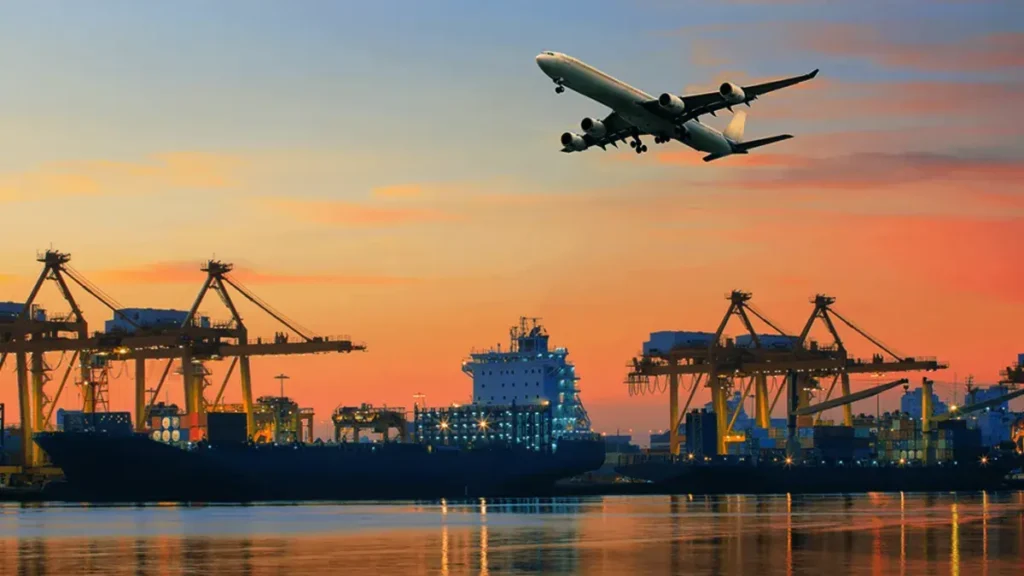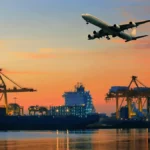Choosing the right shipping method is a key decision for businesses and individuals moving goods internationally. Whether you’re sending a few boxes of products to Europe or importing containers of raw materials from Asia, the freight mode you choose affects cost, speed, and reliability.
In this guide, we compare air freight and sea freight based on real-world factors like delivery time, price, cargo size, and environmental impact — helping you make the smartest choice for your needs.
Which Is Better: Air Freight or Sea Freight?

There’s no one-size-fits-all answer. The right method depends on your goals.
Air freight is faster, more secure, and ideal for light or time-sensitive goods. Sea freight, on the other hand, is far more cost-effective for large shipments and flexible schedules.
| Factor | Air Freight | Sea Freight |
|---|---|---|
| Speed | 2–7 days | 3–6 weeks |
| Cost | High | Low |
| Cargo Suitability | Low-volume, lightweight, high-value | Bulk goods, heavy pallets |
| Environmental Impact | Higher CO₂ emissions | More eco-friendly |
| Risk | Lower (less handling, faster transit) | Slightly higher (longer transit, ports) |
For instance, if you’re shipping a few urgent sample kits to a buyer in Germany, air freight might be your best bet. But if you’re moving containers of textiles or homeware from Thailand to the UK, sea freight is likely more practical.
If you need help choosing the best method, our team at Roadmap Logistics can analyze your shipment and timeline.
When Should You Choose Air Freight?

Air freight is ideal when speed and security matter more than cost.
Best use cases for air freight:
- Time-sensitive goods (e.g., electronics, medical supplies, samples)
- Smaller volumes (under 500 kg or 2 CBM)
- High-value, fragile items
- Perishables or temperature-controlled products
- Just-in-time inventory replenishment
Transit Times
- Asia to Europe or US: 2–5 business days
- Within Southeast Asia: 1–3 business days
Because of limited handling and faster transport, air freight reduces the risk of theft or damage.
Industries that commonly use air freight:
- E-commerce
- Fashion and accessories
- Tech and electronics
- Pharmaceuticals
Example: A Bangkok-based fashion brand shipping 100 units of a new collection to Paris can use air freight to meet a tight launch deadline.
At Roadmap Logistics, we offer priority air shipping, including airport-to-door delivery and customs assistance. Learn more about air freight services.
When Should You Choose Sea Freight?

Sea freight is the backbone of global trade, moving over 90% of the world’s goods. It’s your go-to for heavy cargo or when delivery time isn’t urgent.
Best use cases for sea freight:
- High-volume goods or pallets
- Manufacturing raw materials or supplies
- Bulk imports/exports
- Construction materials
- Long-term stock inventory
Transit Times
- Asia to Europe: 4–6 weeks
- Asia to USA: 3–5 weeks
- Asia to UAE or Middle East: 3–4 weeks
You can choose between:
- FCL (Full Container Load) – Ideal for large, single shipments
- LCL (Less-than-Container Load) – For smaller shipments that share space with others
Example: A furniture distributor shipping 20 pallets from Thailand to Germany can save thousands using sea freight over air.
At Roadmap Logistics, we handle both LCL and FCL, managing bookings, customs, and container planning.
Cost Comparison Example

Let’s look at a 500 kg shipment (1.5 cubic meters) from Bangkok to Rotterdam:
| Mode | Estimated Cost | Delivery Time |
|---|---|---|
| Air Freight | $2,000–$3,000 | 3–5 days |
| Sea Freight (LCL) | $500–$800 | 30–40 days |
Note: Rates vary based on season, cargo type, fuel prices, and port congestion.
The difference is clear. If speed is crucial, air freight justifies the higher cost. But if saving money is more important and you can wait a few weeks, sea freight makes financial sense.
Our freight experts can help you get custom quotes and compare options in real time.
Environmental Impact

Sustainability is becoming a major concern in logistics.
- Air freight emits 47x more CO₂ per ton-km than sea freight
- Shipping by sea, while slower, is significantly more eco-friendly
- Some airlines now offer carbon offset programs to reduce emissions impact
Reference: International Maritime Organization (IMO) – Greenhouse Gas Studies
If you’re a business with sustainability goals, sea freight can help lower your carbon footprint — especially for regular, large-volume shipments.
At Roadmap Logistics, we can also advise on greener supply chain strategies.
How Roadmap Logistics Helps You Decide

Choosing between air and sea isn’t just about speed or cost — it’s about what works for your cargo, timeline, and destination.
At Roadmap Logistics, we:
- Assess your shipment volume, weight, and urgency
- Compare real-time quotes for both modes
- Recommend the best mix (air/sea or split shipping)
- Handle all paperwork and customs end-to-end
Reference: UNCTAD – Maritime Transport Review
We make freight simple, whether it’s across Asia or to ports in Europe, UAE, or the Americas.
Want a quick consultation? Contact our team today.
FAQ: Air vs Sea Freight
Is air freight always faster?
Even with customs, air freight usually delivers in 3–7 days globally. But it costs more.
Can I split my shipment between air and sea?
Absolutely. For example, urgent items can go by air while the rest ships by sea. We can help you plan this.
Is sea freight safe for fragile items?
Yes — as long as proper packaging, palletizing, and container planning are done. Our team ensures your goods are secure during long hauls.
Can I track my shipment?
Yes. Both air and sea freight now include real-time tracking options, depending on the carrier and route.
What documents do I need?
We handle everything — from airway bills to commercial invoices and packing lists. Read more in our guide on customs clearance.
Final Thoughts
So — should you ship by air or sea?
- Choose air freight if time matters, the shipment is small, or security is key.
- Choose sea freight for larger loads, cost savings, or flexible deadlines.
In some cases, a combination of both might be the smartest move.
Let our team at Roadmap Logistics help you make the right call. With full-service freight support, transparent pricing, and real-time updates, we make global shipping easy — whether by sky or sea.
Explore more topics on our logistics blog or get started with a quote today..








